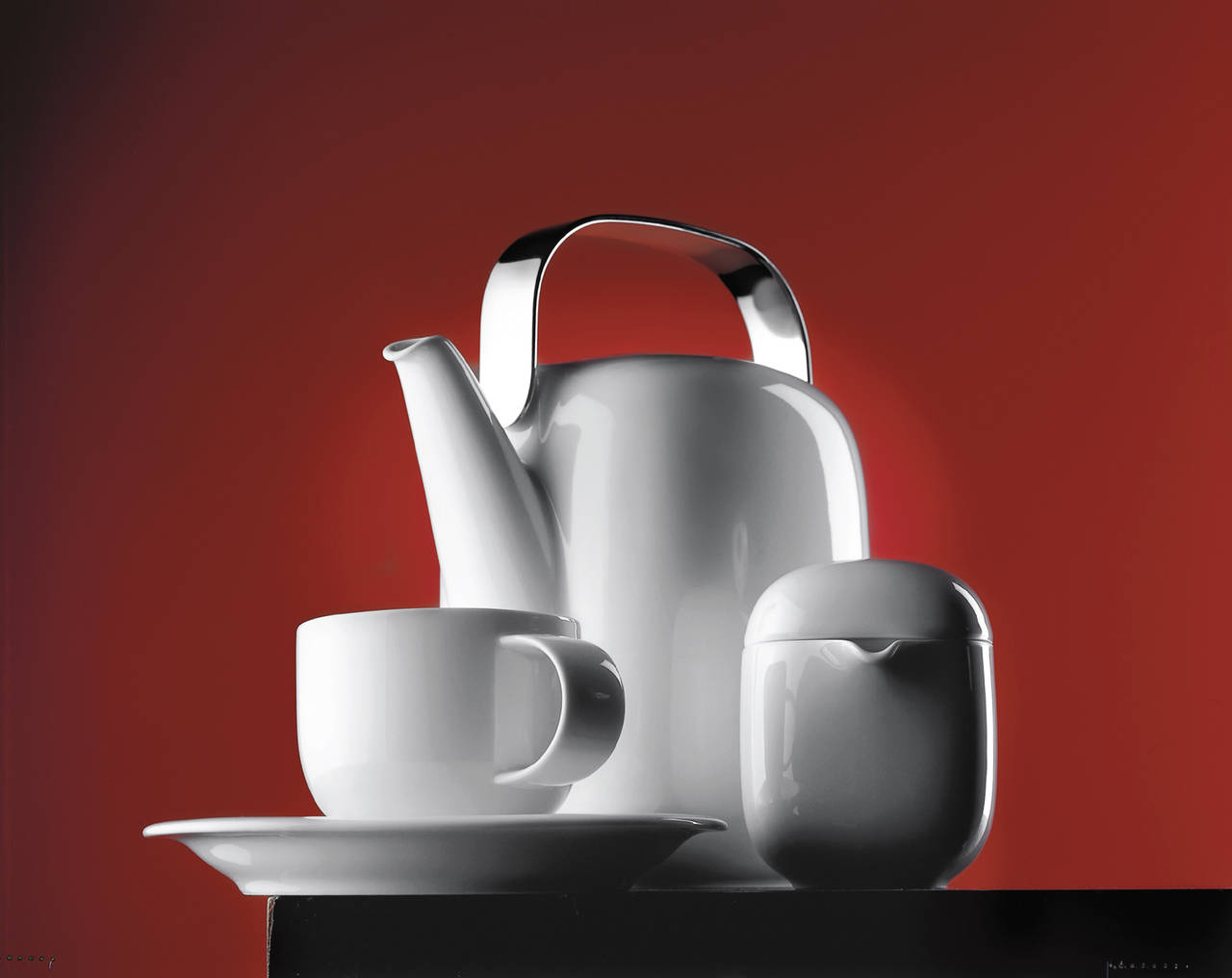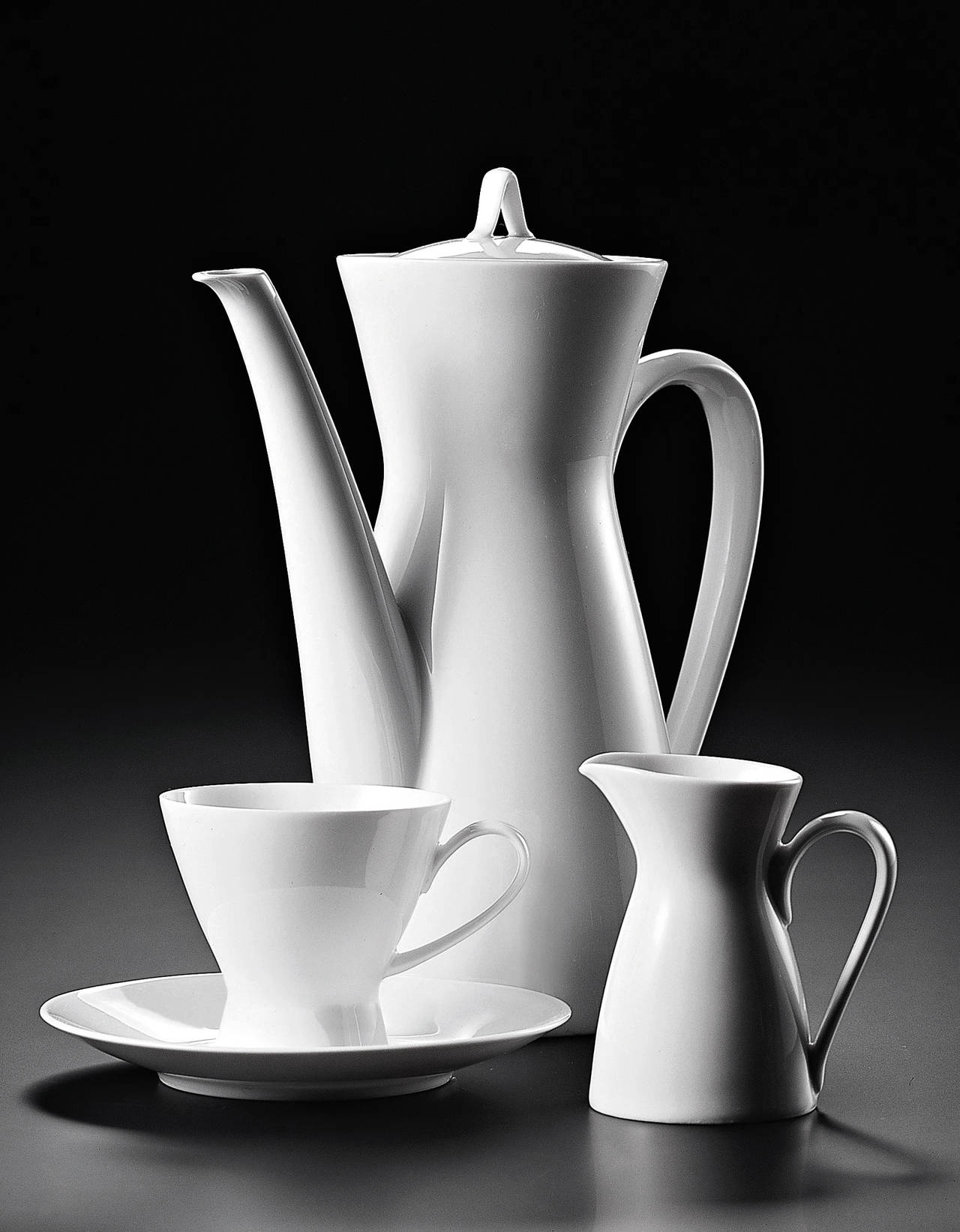People who follow the evolution of fine tableware and the history of design spontaneously link the name of Rosenthal with the production of porcelain, as well as glassware, cutlery and furniture. Founded in 1897, the company, after going through several phases of reorganization, became the biggest and most prominent German producer of porcelain items after the Second World War. In 1997, Rosenthal AG was taken over by the British-Irish company Waterford Wedgwood, thus becoming the European market leader of the glass and porcelain craft industry. Unfortunately, the company went bankrupt in 2008, and Rosenthal AG was bought by the Italian company Sambonet Paderno. Given the dramatic evolution of the dinnerware and industrial porcelain sector, the fundamental issue arises of the urgent need for a shake-up of production strategy. In this context, Studio Line sets a valuable example, which deserves to endure.

The history of this company is both exceptional and exemplary. As soon as he was appointed Advertising Manager and Vice-Chairman, Philip Rosenthal, Jr. established a new strategy, a mode of production directly inspired from the art and research developed in the company’s own laboratories. He created a research center entirely dedicated to the brand, and collaborated with renowned artists and designers in that spirit. This innovative trend among German corporations found its source in Scandinavian companies of the 1930’s, such as Gustavberg in Sweden and Arabia in Finland; it also derives from the British Arts & Crafts workshops, which Rosenthal discovered when he lived in England as a refugee fleeing the Third Reich dictatorship. From 1960 on, he introduced a new line of products entitled Studio Line, which, through cutting-edge research and formal innovations, released several items that had a major influence on the history of post-war German design, changing the perception of German society from exceedingly traditional to genuinely contemporary. No other industry from that era was able to transform its image so successfully on both a commercial and cultural level, thus making Rosenthal an international brand, praised for its relevance.
During the Second World War, Philip Rosenthal, Jr, watching from England the rise of marketing in the United States, hired Richard Latham and Raymond Leowy. These two designed the Form 2000 dinner service for Rosenthal. In the American master’s workshop, Philip Rosenthal, Jr. met Tapio Wirkkala, whom he engaged to develop new products in his research labs. Faithful to his obsession for working on materials, Wirkkala created innovative objects, remarkable for their beauty and their ergonomics – including, for a few examples among many, the series of vases I-XI; the Century dinner service, with its rice grain structure; Tee for Two, which introduced black porcelain; and stainless steel cutlery.
Open-mindedness and a brave willingness to take risks were Philip Rosenthal, Jr’s main qualities. As early as 1958, he brought together the artists and designers who founded the “21 Group” and applied their research and their discoveries to porcelain, inventing the hugely successful concept of artist reliefs, with Moore, Uecker, Mavignier, Morandini and Vasarely among others. Philip Rosenthal, Jr. didn’t hesitate to collaborate with designers from the functionalist movement, who were undeniable masters in this area between 1920 and 1950 and represented a rational and ascetic modernity, such as Wagenfeld or Baumann; at the other end of the spectrum, he worked with more epicurean artists such as Colani, the enfant terrible of German design, or Bellini and Thun. All these designers revolutionized tableware with their creations. Philip Rosenthal, Jr. didn’t hesitate to hire Walter Gropius to build his factories, or to have a dinnerware set – highly prized to this day – designed for his New York office (TAC). It is undeniable that the company wouldn’t have had such a resounding success without the assistance of the highly competent and cultivated Eugen Gomringer, himself a leader of the concrete poetry movement, who was already Max Bill’s secretary at the Ulm School Of Design. Gomringer met Rosenthal through Max Bill, and was Rosenthal’s coordinator and advisor in the 1960’s and the 1970’s, in charge of recruiting artists and designers for industrial production as well as cultural and public art programs, which are still visible in Selb’s urban environment. The Rosenthal-Gomringer duo deserves credit for the successful artistic direction of the company throughout those glorious years.
Another of Philip Rosenthal, Jr.’s pioneering ideas was the 1960 founding in Nuremberg of the first store dedicated exclusively to his new line of products “Studio Line,” the first of a long series including locations in Berlin, Brussels, Vienna and Prague. This idea, directly inspired by the Parisian model of brand name fashion boutiques, was the first transposition of a label in the area of industrial design – a common phenomenon today.

It can be said that the example of Philip Rosenthal, Jr., who died in 2003, was that of an influential personality, an entrepreneur as well as a politician and an enlightened artistic director, a man who understood how important it was to have a corporate strategy based on research and innovation, but who was also prepared to take risks in the name of greater success. Corporations can still look to this strategy as a fruitful source of inspiration. In light of Rosenthal’s incredible success, I find shocking that so many companies close their research labs or give up on investing in experimentation, on the pretext of saving money, when everyone knows full well that innovation is the only way European companies can survive the current economic crisis! Philip Rosenthal, Jr. understood it perfectly when he said that it is all about breathing a sense of renewal and modernity into the company by fueling creation with products born from the company itself, thereby reasserting a sense of cultural and social progress, which becomes a source – rather than a consequence – of well-being.













